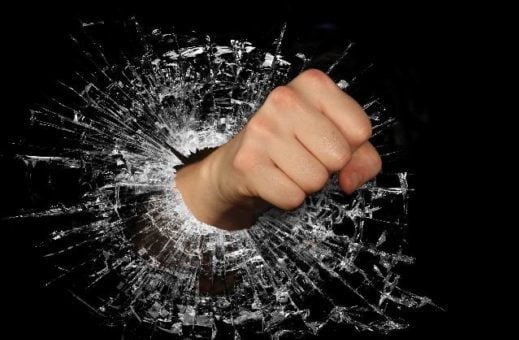USer behaviour deeply impacted by digital technology
David Shing, also known as Shingy, is a digital prophet. His job is to identify trends for brands, audiences and companies at large. He spoke at the SAS Forum 2015 which took place in Paris on November 5 2015. He delivered a great presentation. Right after the show I had the chance to ask him a few questions..
You are a digital prophet. Could you explain this term to us?
The idea is to look at the trends, to still them down from the industry for brands, for clients, for companies and for the industry itself.
So, you work for AOL. But people probably don’t always know what AOL is about now.
You are absolutely right. They don’t necessarily have to know about the core brand of AOL. They know about services and some of the brands I work with; such as Huffington Post and Engadget. There is some science that we own; people call them ‘love brands’. Within our industry, our job is to bring people to brands and brands to people. AOL Inc. is an organization that classes together all brands that actually deliver these ad solutions. And that is the idea of brands to people, people to brands.
You delivered an amazing and very inspirational pitch this morning, in which you said “technology changes our behaviour; it does not change our needs”. What do you mean by that?
Technology is something you are holding that has changed your behaviour. In fact, I saw a photography piece done recently: an artist who had taken out the divisors to see how people’s behaviours have changed. The result is amazing! We’ve had these touch screen devices for less than about 10 years now, and look how our behaviours have changed. I was thinking about it yesterday: I have all these photographs of people that are completely not interacting and they’re missing actual connection because they think they’re connecting elsewhere. We have a generation of people that are head down. We’re going to end up with some sort of syndrome
I’m sure! But this is almost a disconnection; that’s changing the behaviour of what we are
doing. Now does it change our need? No, we still need to connect. So a younger generation is actually connecting more digitally at physical events like sporting, because they still have a need to connect. They’re just doing it differently now, they’re doing it digitally.
You mentioned something that really struck my mind as well: “the current generation has more to do with their grandparents’ generation that they have with their parents”, how can you explain that?
The values that they have are definitely more in tune with the grandparents’ generation. They understand consciousness, they understand things like organic and eco. You know you see a lot of things about people wanting to buy: the younger generation just wants to buy consumer products. But their siblings, the younger ones are definitely growing up with a different type of consciousness; almost like an old-fashioned consciousness. In fact, I’ve seen some behaviours recently of kids that are even putting devices down and they’re questioning things like “well why do you need that device right now, why don’t we just read a book? . They question why do people have multiple cars and they question the type of cars that they have. The generation that are less narcissistic are coming through with it. I think that sort of gives us hope about where it’s heading.

So that means that brands have to be closer to these people, maybe truer than they are at the moment. What do you think?
The concern is more about authenticity and less about ads. It’s about how to become useful. How to understand what it means to be in the real-time world ? What are the things we need to measure against reaction? Maybe its sentiment versus click through, or maybe there are some other values that you need to understand as dynamics of an organization when you’re actually marketing to people. There are going to be some things you need; an experiment budget is definitely one of them. You need to make sure that you understand how you are going to listen in return and how to measure that. I would argue sentiment is one of those things.
Sentiment is quite an issue actually in terms of brand monitoring because it’s not easy to understand.
Especially when you think about positive vs. negative and reach vs. passion. There is a number of different ways to look at it, so I think that’s one of the dynamics of beautiful data. During my presentation I said “look to the signals not the noise”; there’s so much data out there to collect. When you look at things you should be able to link the things that, for a certain brand, equal passion or equal reach. You can’t measure all data equally; it has to be balanced, based on the brands on the marketMarket definition in B2B and B2C - The very notion of "market" is at the heart of any marketing approach. A market can be defined.... So I don’t even think that a brand A can compare itself to brand B. It can do in terms of volume, but probably not in terms of the way that they measure their marketing activity.
There’s a challenge for the marketing industry. You mentioned something about Internet of Things which I really liked: “it is not about the Internet of things, it’s about the Internet of everything”. People actually get it wrong, so could you expatiate on that please?
The Internet of everything, is everything that we now try to buy and connect. What is the actual transparent interface that’s going to connect all those things together to make it feel like it’s something that makes sense? So it’s less about the internet of things, it’s the internet of everything that needs to be connected somehow to make it feel like it’s a part of an ecosystem. I have business cards that have an R.F I.D chip in it; so that’s a paper products has an R.F I.D chip in it and it’s just my calling card. So everything that I see that we now have access to, somehow is trying to make us connect to something – whether it’s an active or a passive connection.
So the imagination is the limit really, I’m sure there are some amazing things…
Yeah, absolutely. Imagination is important absolutely, experimentation, to make sure that you know if you have to. There is the quote I have by Katherine Hepburn which is “if you play by the rules all the time, you miss all of the fun” . That’s the reality: one of the things have become super contagious. If that’s something that’s important to you then I think you have access to that. It’s pretty exciting man..
Thank you very much David!
Thanks for having me.
- Nobody understands how AI works - 23/03/2024
- Naturally Smart Writing, Beyond the Artificial - 18/03/2024
- LinkedIn’s new features under the microscope - 14/03/2024




